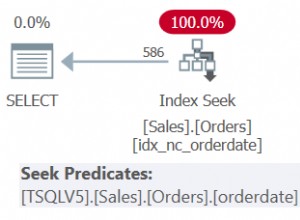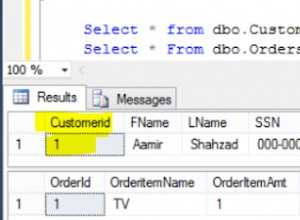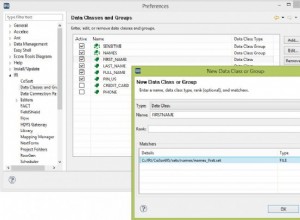Więc skończyłem z SQL, aby to naprawić. Rdzeń mojego rozwiązania znajduje się poniżej - w zasadzie ja
- utwórz indeks dla user_id w nowym profilu
- ten indeks musi istnieć, zanim będę mógł odwoływać się do niego jako do klucza obcego
- utwórz nową tabelę za pomocą
- Zacząłem od danych wyjściowych
SHOW CREATE TABLE userprofile_userprofile_subjects(specyficzne dla MySQL) - Nieznacznie zmodyfikowałem nazwy kluczy i nazwy ograniczeń
- Zacząłem od danych wyjściowych
- skopiuj wszystkie dane do nowej tabeli przelotowej
- upuść stary stół
- zmień nazwę nowej tabeli przelotowej na nazwę starej tabeli przelotowej
- na koniec wykonaj operacje, które migracje django automatycznie dla mnie wygenerowały
Mam nadzieję, że to pomoże komuś innemu. I nadal chciałbym wiedzieć o lepszym rozwiązaniu.
from django.db import migrations
class Migration(migrations.Migration):
dependencies = [
# ...
]
operations = [
migrations.RunSQL(
'ALTER TABLE userprofile_userprofile '
'ADD INDEX `userprofile_userprofile_1234abcd` (user_id)'
),
migrations.RunSQL (
'CREATE TABLE userprofile_temp_table ('
'`id` int(11) NOT NULL AUTO_INCREMENT, '
'`userprofile_id` int(11) NOT NULL, '
'`subject_id` int(11) NOT NULL, '
'PRIMARY KEY (`id`), '
'UNIQUE KEY `userprofile_userprofile_subjects_userprofile_us_7ded3060_uniq` (`userprofile_id`,`subject_id`), '
'KEY `userprofile_userprofile_subject_1be9924f` (`userprofile_id`), '
'KEY `userprofile_userprofile_subject_e5a9504a` (`subject_id`), '
'CONSTRAINT `subject_id_refs_id_69796996` FOREIGN KEY (`subject_id`) REFERENCES `otherapp_subject` (`id`), '
'CONSTRAINT `userprofile_user_id_refs_user_id_1234abcd` FOREIGN KEY (`userprofile_id`) REFERENCES `userprofile_userprofile` (`user_id`) '
') ENGINE=InnoDB AUTO_INCREMENT=35500 DEFAULT CHARSET=utf8 '
),
migrations.RunSQL (
'INSERT INTO userprofile_temp_table '
'(userprofile_id, subject_id) '
'('
' SELECT userprofile_userprofile.user_id, userprofile_userprofile_subjects.subject_id'
' FROM userprofile_userprofile_subjects'
' INNER JOIN userprofile_userprofile'
' ON userprofile_userprofile_subjects.userprofile_id ='
' userprofile_userprofile.id'
')'
),
migrations.RunSQL (
'DROP TABLE `userprofile_userprofile_subjects`'
),
migrations.RunSQL (
'RENAME TABLE `userprofile_temp_table` TO `userprofile_userprofile_subjects`'
),
migrations.RemoveField(
model_name='userprofile',
name='id',
),
migrations.AlterField(
model_name='userprofile',
name='user',
field=models.OneToOneField(
primary_key=True, serialize=False, to=settings.AUTH_USER_MODEL
),
preserve_default=True,
),
]




